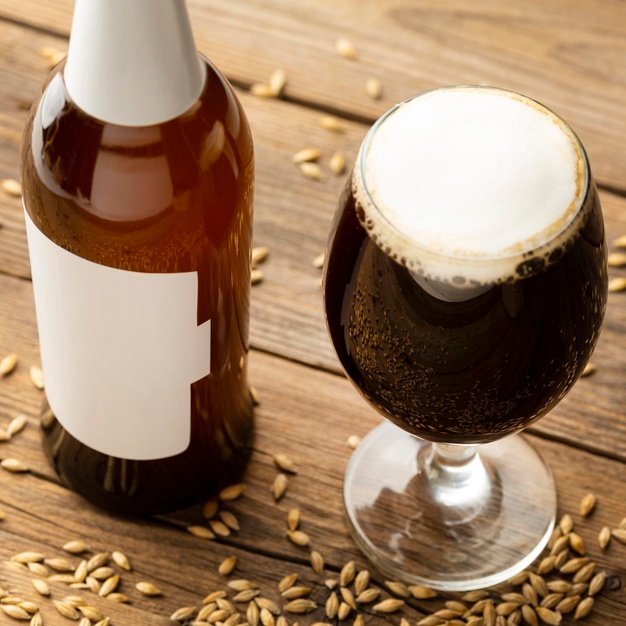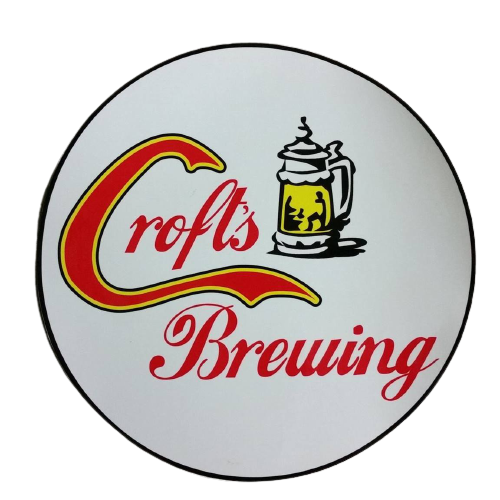Clean + Sanitize
1. We recommend using Powdered
Brewery Wash (PBW) mixed with hot
water to clean brewing equipment. DO
NOT use products containing bleach,
chlorine, fragrance, dyes or detergent.
Mix 2 Tbsp of PBW into 4.5L hot water
2. Clean Equipment
Wash all equipment with PBW solution,
then rinse thoroughly with water.
3. Prepare Star San Dilution
Follow the manufacture’s instructions on the bottle of Star San concentrate
when diluting. Check packaging for
details.
4. Sanitize Equipment + Work Area
Spray down or soak equipment, work
surfaces and hands with Star San
solution. Wait 2-3 minutes before using
equipment to ensure equipment is
properly sanitized. DO NOT rinse.
5. Proceed to next steps immediately after
sanitizing.

Star San is food safe and will not a ect
the avour of your brew. Discard Star San
if the solution becomes cloudy. Star San
will foam to maximize surface coverage.
Unused Star San may be retained for
future use when made with distilled
water
Basic Beer Making Ingredients
Ready Brew Kit (Wort) – The large bag of
liquid in your Ready Brew kit at room
temperature
Dry or Liquid Yeast Pack – Type of yeast
used depends on the type of kit and
personal preference
Dextrose – Corn sugar for carbonation.
We recommend using 145g of dextrose
for a 23L Ready Brew kit
Additives (Optional) – You may choose to
add hops, extracts + spices to the brew


Basic Beer Making Equipment
Primary Fermenter
Food grade plastic pail and lid with a
hole for an airlock and rubber bung
Carboy
23 L glass carboy with an airlock and
rubber bung
Racking Cane and Tubing
At least 5 ft. of exible food grade
tubing with rigid plastic syphon rod
Fermentation Lock and Stopper
An airlock and rubber bung that ts
into the fermenter and carboy
Bottles and Caps
Approximately 50-60 beer bottles (do
not use clear bottles)
Powdered Brew Wash
StarSan Concentrate
1. Primary Fermentation
1. Prepare the Yeast
Sanitize the yeast packet and scissors
with Star San dilution. Follow the
instructions on the yeast packet.
Pro Tip: Hydrate dry yeast prior to
pitching. Sprinkle yeast into 1 Cup
of water at 37C . Leave to rest for
20 minutes. We recommend using
a thermometer at this stage.
2. Aerate Wort
Ensure that the wort is at room
temperature. Pour wort into a sanitized
fermenter. Allow the wort to splash
during this process.
Pro Tip: Stir the wort vigorously at
this stage to incorporate more air.
3. Pitch the Yeast (Add Yeast to Wort)
Gently pour the yeast mixture into the
fermenter with the wort. Do not stir.
4. Cover the Fermenter
If using an airlock, seal the lid of the
fermenter and ll airlock halfway with
Star San solution before inserting into
the lid. Alternatively, simply set the lid
on top of the fermenter.
5. Store in a dark place with a consistent
temperature for the duration of
fermentation. Check the yeast packet for
temperature recommendations.
Pro Tip: Try to avoid storing your
fermenter on the ground or on a
concrete surface.
2. Secondary Fermentation
Transfer is typically done on day 7 for ales,
and day 10 for lagers. The temperature of
the environment will a ect the speed of
fermentation
Warmer = Faster fermentation
Cooler = Slower fermentation
1. Transfer
Carefully syphon beer into a sanitized
carboy. Do not disturb the sediment at
the bottom. Seal your carboy with airlock
and store until ready to bottle.

3. Bottle
Your beer is ready for bottling around day 7
for ales, and day 14 for lagers depending on
the temperature of the environment.
1. Mix Dextrose
Fully dissolve dextrose into 1 Cup of
boiling water. Allow the mixture to cool
to room temperature.
2. Rack Over Into Pail or Carboy
To incorporate the dextrose mixture into
your beer, rack the beer over into a
sanitized carboy, and pour the sugar
mixture into the carboy as it lls.
3. Syphon Beer Into Bottles
Gently syphon your beer into bottles,
leaving 1 1/2″of air space in the neck of
each bottle. Cap immediately.
4. Storage
Keep bottles in a warm place for 1-2
weeks to carbonate before moving them
to cold storage. Chill and enjoy!
